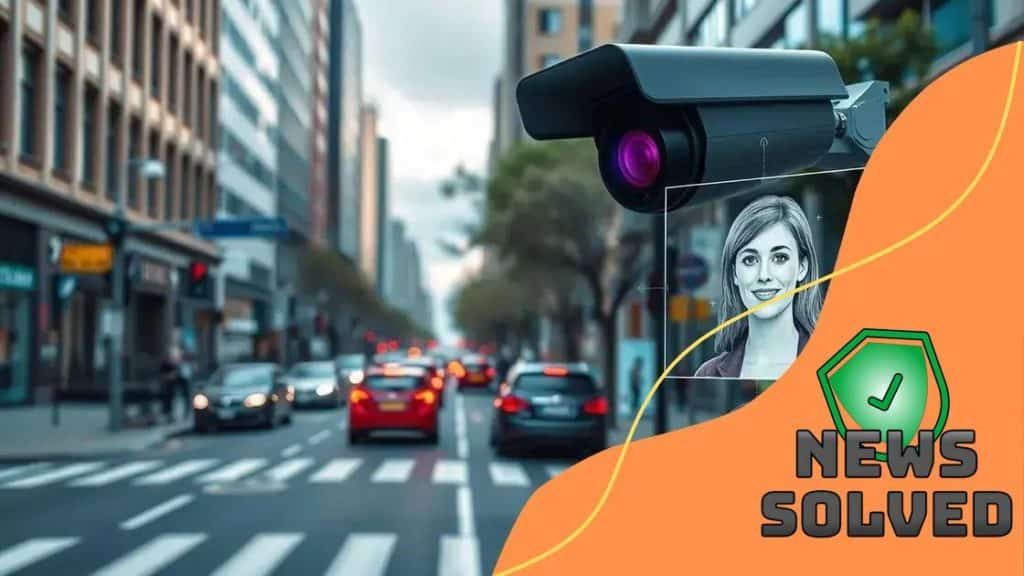The role of facial recognition in enhancing public safety

Advertisements
The role of facial recognition in enhancing public safety includes improving crime prevention, streamlining investigations, and increasing security measures in public spaces, while also raising privacy and ethical concerns.
The role of facial recognition in enhancing public safety is becoming increasingly significant in our society. Have you ever thought about how these technologies can impact your daily life and community safety?
Advertisements
Understanding facial recognition technology
Understanding facial recognition technology is essential in today’s digital world. This innovative technology uses algorithms to identify faces in images and videos. It plays a vital role in various applications, especially in public safety.
How It Works
Facial recognition technology operates through several steps. First, it captures an image of a face. Then, it analyzes the facial features to create a unique template. This template is compared against a database of known faces.
Key Features of Facial Recognition
- High accuracy in identifying individuals
- Real-time processing and recognition
- Ability to function in various lighting conditions
- Integration with other security systems
The accuracy of this technology largely depends on the quality of images used. Clear, high-resolution images yield better results. This reliability is why many law enforcement agencies have adopted facial recognition systems.
Advertisements
In addition, facial recognition technology can enhance security in public spaces. For instance, it helps to quickly identify suspects in crowded areas. This capability can reduce crime rates and improve response times during emergencies.
Applications in Everyday Life
Besides law enforcement, this technology has applications in everyday life:
- Unlocking smartphones
- Identifying individuals in social media platforms
- Providing personalized experiences in retail
As technology advances, the adoption of facial recognition is likely to increase. It is crucial for the public to understand both its benefits and potential challenges. Awareness can drive discussions about ethical considerations and privacy concerns surrounding its use.
Benefits for law enforcement agencies
The benefits for law enforcement agencies using facial recognition technology are numerous. This tool helps in enhancing safety and efficiency in police work. By quickly identifying individuals, officers can respond faster to incidents.
Improved Crime Detection
Facial recognition assists law enforcement in detecting crimes. With access to a large database of known criminals, police can quickly identify suspects involved in incidents. This technology allows for real-time analysis during investigations, making it easier to apprehend offenders.
Streamlined Investigation Processes
- Reduces time spent on manual identification
- Enhances coordination between different agencies
- Facilitates quicker gathering of evidence
- Improves overall case management efficiency
This technology leads to improved communication among agencies. Sharing data becomes more straightforward. Law enforcement can work collaboratively, resulting in more comprehensive investigations. Knowing that facial recognition can reveal hidden connections between cases makes it a powerful asset.
Additionally, facial recognition technology helps in crowd management during large events. Police can monitor areas for potential threats in real time. This proactive approach is essential for preventing crimes before they occur. With constant advancements, the accuracy and reliability of these systems are expected to improve even further.
Enhanced Public Trust
When officers effectively use facial recognition to solve crimes, it fosters public trust. Citizens appreciate knowing that measures are in place to keep them safe. Transparency in how this technology is used is key to maintaining that trust.
Moreover, as law enforcement agencies adopt facial recognition technology, they also invest in community training and awareness. Ensuring that the public understands how this technology works and its benefits is vital for acceptance.
Challenges and ethical considerations

While there are many benefits of facial recognition technology, several challenges and ethical considerations arise. Understanding these issues is vital for responsible use in public safety.
Privacy Concerns
One of the main challenges involves privacy. Many people worry about constant surveillance and how their images might be used. It’s essential for agencies to maintain a balance between security and personal privacy.
Misidentification Risks
Facial recognition is not foolproof. There can be instances of misidentification. This can lead to false accusations or wrongful arrests. Such risks highlight the need for accurate and reliable systems, along with regular audits to ensure effectiveness.
- Addressing biases in recognition technology
- Ensuring proper data management
- Implementing clear usage policies
Moreover, there are ethical questions regarding consent. Many individuals are not aware when their faces are scanned or stored. This lack of awareness raises concerns about the transparency of systems in place. Educating the public about these technologies is crucial for their acceptance.
In addition, the potential for abuse exists. If misused, facial recognition can become a tool for oppression rather than protection. Transparent guidelines and regulatory measures are necessary to mitigate this risk.
Community Trust
Maintaining community trust is vital for law enforcement agencies. When the public sees that their concerns are taken seriously, it fosters a safe environment. Establishing clear policies on the use of facial recognition technology can help in building this trust. Effective communication about how and why this technology is implemented encourages public engagement.
Real-world applications in public safety
Real-world applications of facial recognition technology significantly enhance public safety. This technology is not just theoretical; it’s being used effectively in various settings across the globe.
Law Enforcement and Crime Prevention
Police departments utilize facial recognition to identify suspects quickly. By comparing images from crime scenes to databases of known offenders, they can solve cases more efficiently. This technology allows officers to analyze video footage from security cameras, improving the chances of catching criminals.
Event Management and Security
- Monitoring crowds at large events like concerts or sports games
- Identifying banned individuals in real-time
- Enhancing safety measures through instant alerts
During major events, security personnel rely on this technology to maintain safety. By identifying potential threats quickly, they can take preventive action, ensuring public safety.
In addition to events, facial recognition technology is applied in airports. It helps streamline the passenger identification process, reducing wait times and increasing security. As travelers scan their faces at checkpoints, it enhances efficiency in the whole boarding process.
Healthcare and Access Control
Another vital application is in healthcare. Hospitals use facial recognition to manage patient identification accurately. This practice minimizes the risk of medical errors linked to wrong patient identification.
Furthermore, this technology is increasingly seen in access control systems. Businesses and other organizations use it to ensure that only authorized personnel are allowed into secure areas. This application adds an additional layer of security.
Future trends in facial recognition
The future trends in facial recognition technology show exciting potential for enhancing public safety. As technology evolves, its applications will likely expand and become even more integrated into everyday life.
Advancements in Accuracy and Efficiency
One main trend is the improvement in accuracy rates. New algorithms are being developed that better recognize faces in various conditions, such as poor lighting or varying angles. This increase in precision will enable law enforcement agencies to use these systems more confidently.
Integration with AI and Machine Learning
- Combining facial recognition with other AI technologies
- Enhancing predictive analytics for crime prevention
- Improving real-time decision-making
As AI and machine learning capabilities advance, they will further enhance facial recognition technology. This integration will allow systems to learn from data and improve their responses over time. The resulting systems will provide valuable insights for public safety initiatives.
Moreover, we can expect an increase in the usage of mobile applications that utilize facial recognition technology. These apps can help individuals verify their identity securely, making transactions safer. From banking to airport check-ins, the convenience of this technology is becoming a reality.
Ethical and Regulatory Developments
Another trend focuses on ethical considerations and regulations. As the use of facial recognition grows, there will be a greater emphasis on privacy and civil rights. Governments and organizations are likely to implement regulations to ensure responsible use of this technology.
Public discussions around these issues will shape how facial recognition technology is deployed. Striking the right balance between security and privacy will remain a priority for stakeholders.
FAQ – Frequently Asked Questions about Facial Recognition Technology
What are the main benefits of facial recognition technology?
Facial recognition technology enhances public safety by improving crime prevention, streamlining investigations, and providing faster identification of individuals.
What challenges does facial recognition technology face?
The technology faces challenges such as privacy concerns, risks of misidentification, and ethical considerations surrounding its use in public spaces.
How is facial recognition technology being used in law enforcement?
Law enforcement agencies use facial recognition to identify suspects in real-time, analyze security footage, and manage crowd safety during events.
What are future trends in facial recognition technology?
Future trends include advancements in accuracy, integration with AI for better analytics, and a focus on ethical regulations to ensure responsible use.





